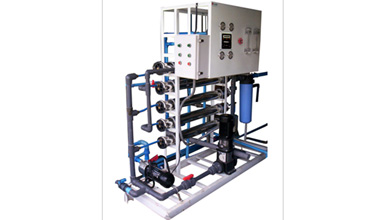| Products > Water Treatment Equipment > Membrane Based >> |
|
| Nanofiltration Plant:- |
 |
|
| |

|
| |
| Introduction:- |
 |
|
| |
Nanofiltration water treatment is a liquid separation membrane technology. Shivam’s Nanofiltration systems are capable of removing water hardness (calcium and magnesium) The product is also capable of removing bacteria, viruses and color, as well as organic compounds. Nanofiltration is also used to remove pesticides and other organic contaminants from surface and groundwater.
Sometimes referred to as membrane softening or membrane water softeners, Nanofiltration is an alternative to salt based water softening.
Nanofiltration is especially well-suited for treatment of municipal water, well water, or water from surface sources like rivers and lakes.
|
|
| Typical Membrane separation Chart for Different feed |
| |
Working Principle:- |
 |
|
| |
Nanofiltration is a pressure driven separation process. The filtration process takes place on a selective separation layer formed by an organic semi-permeable membrane. The driving force of the separation process is the pressure difference between the feed (retentate) and the filtrate (permeate) side at the separation layer of the membrane. |
| |
Applications:- |
 |
|
| |
- Nanofiltration Plants are applied in water softening,
- The removal of harmful substances in drinking water,
- The water treatment plants for reclaimed water and wastewater,
- The concentration and separation of water solution in chemical techniques.
- Pharmaceutical
- Food Industry
- Treatment of municipal water, well water, or water from surface sources like rivers and lakes.
|
| |
Advantages:- |
 |
|
| |
- Lower energy costs
- Lower discharge
- Reduces salt (TDS) content of slightly brackish water
- Reduces pesticides, VOC's (organic chemicals)
- Reduces heavy metals
- Reduces nitrates and sulfates
- Reduces color, tannins, and turbidity
- Chemical-Free - i.e. does not use salts or chemicals
- pH of the water after the Nanofilter is typically non aggressive.
- Operate at medium pressure.
- Removal of Hardness.
- Reduction of slat content in brackish water.
- Compact and minimum space requirement
- Selective separation of hardness constituents
- Separation of bacteria and viruses
- Reduced energy consumption
- Reduced expenses in consequent treatment
- Reduced investment and operating costs
- Unloaded retentate (Direct disposal possible)
- Environmentally friendly solution
- Reduced problems in corrosion
|
| |


